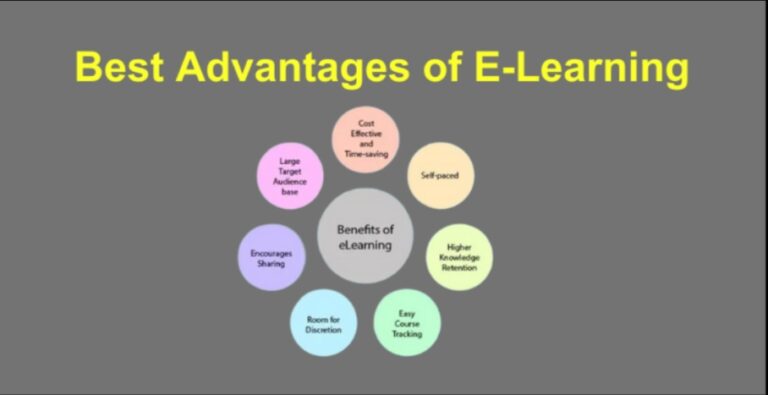What Are The Elements Of Business Analytics?
In the contemporary rapidly evolving business landscape, the effective utilization of data has become paramount for companies striving to gain a competitive edge. Business analytics is at the heart of this data-driven revolution. This multifaceted discipline empowers organizations to extract valuable insights from vast datasets, enabling informed decision-making and strategic planning. Understanding the fundamental elements of business analytics is essential for businesses aiming to harness the caopabilities of data to optimize operations, drive growth, and enhance overall performance. From data collection and analysis techniques to predictive modeling and visualization tools, the elements of business analytics form the cornerstone of modern business intelligence strategies. In this blog, we delve into the key components that constitute the foundation of business analytics, shedding light on their significance and practical applications in today’s dynamic business environment.
Moreover, in the modern business landscape, the elements of business analytics are vital for informed decision-making and strategic planning. By harnessing data collection, analysis, and interpretation, businesses gain insights into the market trends, consumer behavior, and operational efficiencies, allowing them to seize opportunities and mitigate risks effectively. This capability, enhanced by advanced analytics techniques like predictive modeling and machine learning, drives profitability and sustainability. The growing reliance on data-driven insights has made business analytics a sought-after career option.
Employers increasingly seek professionals skilled in data analysis, business intelligence, and predictive analytics. Pursuing a postgraduate (PG) program in business analytics equips individuals with the necessary expertise and credentials to excel in this field. A PG in business analytics offers comprehensive data analysis techniques, statistical modeling, data visualisation training, hands-on experience, and networking opportunities.
What is Business Analytics?
Business analytics is the systematic exploration, analysis, and interpretation of data to extract actionable insights that inform strategic decision-making and drive organizational success. It involves employing various techniques such as data mining, predictive modeling, and statistical analysis to uncover patterns, trends, and relationships within large datasets. By leveraging advanced analytics tools and methodologies, businesses can get valuable insights into customer behavior, market dynamics, and operational efficiencies. These insights enable businesses to optimize processes, improve performance, and capitalize on emerging opportunities. Ultimately, business analytics empowers organizations to make data-driven decisions, mitigate risks, and achieve their objectives in an increasingly competitive and dynamic business environment.
Important Elements of Business Analytics
When a company opts to implement business analytics, its choice typically hinges on the predetermined end goal for the business. Regardless of the method employed by the company, it ultimately leads to actionable insights. The following are the various components or methods integral to business analytics that are utilized to derive conclusions.
Data Mining: Data mining involves discovering patterns, trends, correlations, and anomalies within large datasets. It employs statistical analysis, machine learning algorithms, and artificial intelligence to extract insights from structured and unstructured data. Data mining enables businesses to uncover valuable information about customer behavior, market trends, and operational efficiencies by identifying hidden patterns and relationships. This information can then be used to make informed decisions, predict future outcomes, and drive strategic initiatives.
Text Mining: Text mining, or text analytics, emphasizes on extracting insightful information from unstructured text data such as emails, social media posts, customer reviews, and documents. It involves techniques, including natural language processing (NLP), sentiment analysis, and topic modeling to analyze and interpret textual data. Text mining enables businesses to gain insights into customer sentiment, identify emerging trends, and extract valuable knowledge from vast amounts of unstructured text. This information can be used to improve customer service, develop targeted marketing campaigns, and enhance decision-making processes.
Data Aggregation: Data aggregation involves combining and summarizing data from multiple sources or databases into a unified dataset for analysis. It helps businesses consolidate disparate data sources, remove duplicates, and standardize data formats to create a single source of truth. Data aggregation enables organizations to view their operations, customers, and market landscape comprehensively. By aggregating data from various sources, such as sales transactions, customer interactions, and social media, businesses can uncover valuable insights, identify trends, and make data-driven decisions more effectively.
Forecasting: Forecasting is a predictive analytics technique that predicts future trends, behaviors, or outcomes based on historical data and statistical models. It involves analyzing past data patterns and using them to extrapolate future scenarios and trends. Forecasting techniques range from simple time series analysis to more complex predictive modeling algorithms such as regression analysis and machine learning. Businesses use forecasting to anticipate demand, optimize inventory levels, allocate resources efficiently, and mitigate risks. By accurately predicting future outcomes, businesses can make proactive decisions and stay ahead of market dynamics.
Data Visualization: Data visualization involves the graphical representation of data to facilitate understanding and interpretation. It transforms complex datasets into intuitive charts, graphs, and dashboards that convey insights visually. Data visualization enables businesses to explore data trends, identify patterns, and communicate findings effectively. By presenting data in visually compelling formats, businesses can uncover actionable insights, make informed decisions, and share information with stakeholders more efficiently. Data visualization tools and techniques range from simple bar charts and pie graphs to interactive dashboards and heat maps, allowing businesses to explore and analyze data meaningfully.
Future of business analytics
Business analytics is experiencing rapid growth in India, with a promising future ahead. Several factors contribute to this optimistic outlook:
Increasing adoption of data-driven decision-making: Indian businesses recognize the significance of data in shaping strategic decisions, leading to investments in analytics tools and hiring skilled professionals to analyze and interpret data effectively.
Growth in the number of businesses: India’s expanding economy fosters a rise in enterprises, creating a greater demand for professionals proficient in business analytics.
Digital transformation: The ongoing digital revolution in India fuels the adoption of advanced analytics and automation across various sectors like finance, retail, manufacturing, and healthcare.
Government initiatives: The Indian government actively promotes analytics adoption through various initiatives, fostering the development of the analytics ecosystem nationwide.
As businesses evolve from relying solely on business intelligence systems to leveraging algorithms for decision-making, the emphasis on generating and utilizing vast amounts of data will further drive the evolution of business analytics. This transformative process will reshape how both businesses and clients perceive analytics, paving the way for innovative and disruptive developments in corporate analytics strategies and outcomes.
Conclusion
Understanding the fundamental elements of business analytics is important for organizations seeking to thrive in today’s data-driven landscape. Pursuing a PG in business analytics equips individuals with the necessary skills and expertise to excel in this dynamic field, making it a wise option for those aspiring to build a successful career in analytics-driven industries.
Read Also Cybersecurity For Your Business Data







